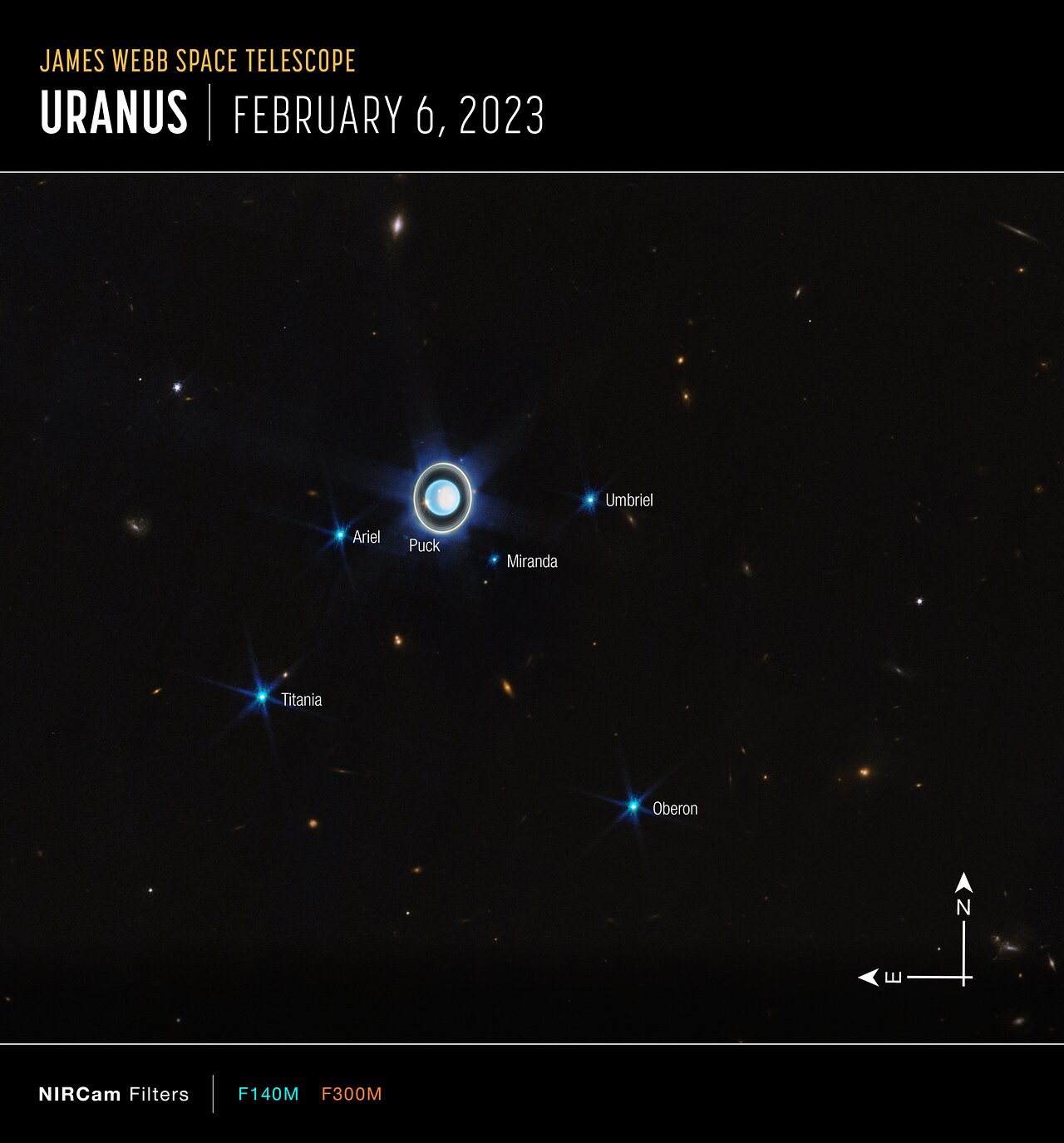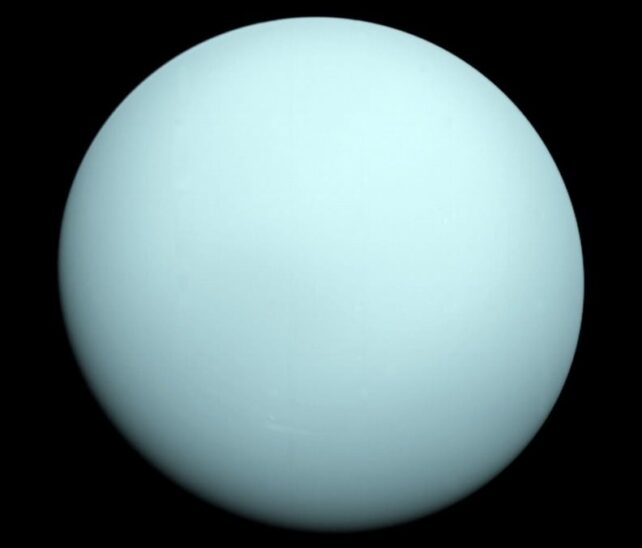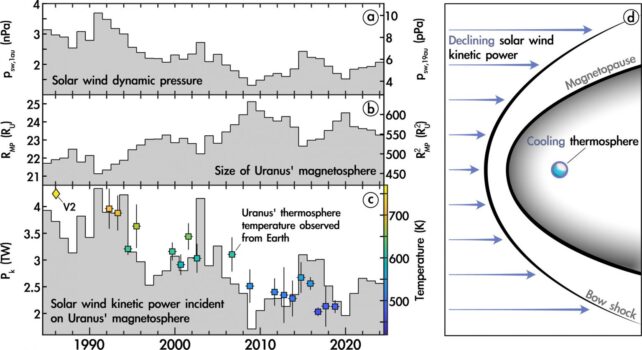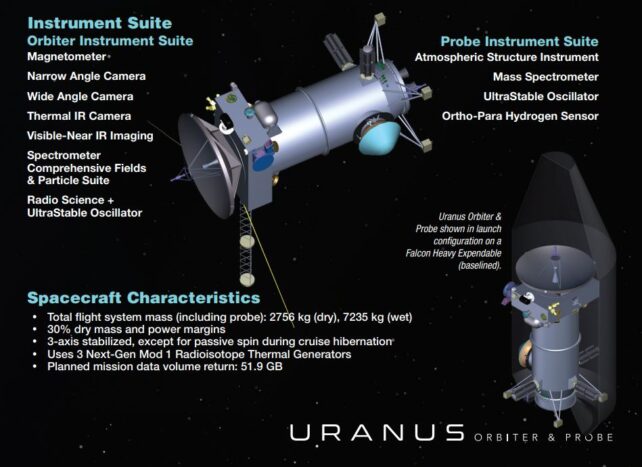Uranus is the odd one out among the planets of the solar system.
While the axis of rotation of most planets is perpendicular to their orbital plane, Uranus has an extreme tilt angle of 98 degrees. It fell on its side, probably due to an earlier collision. It also has a retrograde orbit, opposite to the other planets.
The ice giant also has an unusual relationship with the sun, which sets it apart from other planets.
Uranus’ uniqueness extends to its upper atmosphere, called the thermosphere corona. Temperatures in that area exceed 500 degrees Celsius, and the heat sources responsible have puzzled astronomers.
The corona extends up to 50,000 km above the surface, which also sets it apart from other planets. Even stranger is that the temperature is dropping.

When Voyager 2 flew past Uranus in 1986, the temperature of the thermosphere was measured. In the intervening decades, telescopes have continuously measured the temperature of Uranus.
All these measurements show that the planet’s upper atmosphere is cooling and its temperature has halved. None of the other planets underwent the same changes.
Scientists know that Uranus’ thermosphere is a thin layer. It has a built-in ionosphere and helps astronomers measure the temperature of the thermosphere. It is a layer of ions that separates the lower atmosphere from the planet’s magnetosphere.
H3+ ions in the ionosphere quickly reach thermal equilibrium with the surrounding neutral substances. The ions emit photons in the near-infrared (NIR), allowing astronomers to monitor the temperature of the thermosphere with ground-based telescopes as some NIR wavelengths penetrate Earth’s atmosphere.
For example, they know that the upper atmosphere is cooling, while observations of the lower atmosphere show no cooling.

The cooling is a mystery and seasonal effects were ruled out as the cause of the temperature drop. This also applied to the sun’s eleven-year solar cycle, during which the sun’s energy level changes.
New research published in Geophysical Review Letters has an explanation for the temperature shift. It is titled: “Solar wind energy likely determines Uranus’ thermospheric temperature.” The lead author is Dr. Adam Masters from the Department of Physics at Imperial College.
According to Masters and his colleagues, the solar wind is responsible for cooling Uranus. The solar wind is a stream of charged particles that comes from the outer layer of the sun, the corona. It is a plasma composed mainly of electrons and protons and also contains atomic nuclei and heavy ions.
“This apparently very strong control of Uranus’ upper atmosphere by the solar wind is unlike anything we have seen on any other planet in our solar system,” Adams said.
As the solar wind continues incessantly, its properties gradually change on time scales that match the changes in Uranus’ upper atmosphere.
Since about 1990, the average outward pressure of the solar wind has decreased slowly but significantly. The decline does not correlate with the Sun’s known 11-year cycle, but it does correlate closely with the changing temperature of Uranus.

This suggested to the researchers that, unlike Earth, Uranus’ temperature is not controlled by photons.
It is a known fact that photons from the sun heat the Earth. It is the basis for life. While our planet’s magnetosphere largely shields Earth from the solar wind, photons are not stopped.
Uranus is much further from the Sun than Earth, almost 3 billion km, while Earth is only about 228 million km from the Sun. The number of photons reaching Uranus is not enough to heat the planet. Instead, the waning solar wind causes Uranus’ magnetosphere to expand.
Because the magnetosphere protects Uranus from the solar wind, its expansion makes it more difficult for the solar wind to reach the planet. Energy flows through space around the planet, eventually reaching the thermosphere and controlling its temperature.
“Decreasing kinetic solar wind energy, or nearly identical total solar wind energy, should mean a weakening of the heating of Uranus’ thermosphere, leading to the observed long-term temperature drop,” the authors explain in their paper.
This means that for nearby planets, such as Earth, starlight regulates the temperature of the thermosphere, while for planets further away, the solar wind takes over.
This discovery could influence a proposed future mission to Uranus.
The Planetary Science and Astrobiology Decadal Survey 2023-2032 identified a mission to Uranus as a top priority, although none has been approved to date. The mission concept is called Uranus Orbiter and Probe (UOP) and one of its main goals is to study the ice giant’s atmosphere.

The mission was supposed to tackle the mystery of Uranus’ cooling, but scientists struggled to understand it. These findings mean the mission goals can be updated, and the question becomes how the solar wind energy gets into Uranus’ unusual magnetosphere.
This study not only answers a puzzling question about Uranus, but also extends to exoplanets. If this cooling by solar wind can happen here, it can also happen elsewhere.
“Outside the Solar System, this explanation for the cooling of Uranus’ thermosphere implies that exoplanet mates hosting stars without strong local propulsion (such as Jupiter) and with sufficiently large magnetospheres will undergo a predominantly electrodynamic interaction with their parent star,” the authors write.
For these exoplanets, the stellar wind will largely determine the thermal evolution of the upper atmosphere, and not the stellar radiation. The stellar wind can also power certain types of auroras.
“This strong star-planet interaction on Uranus could have implications for determining whether various exoplanets generate strong magnetic fields in their interiors – an important factor in the search for habitable worlds beyond our solar system,” Adams concluded.
This article was originally published by Universe Today. Read the original article.
